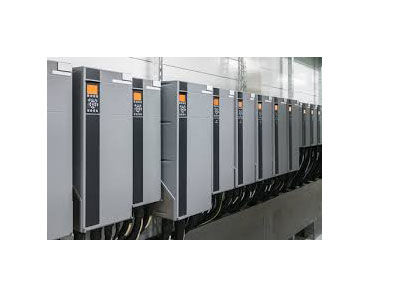Key Takeaway
A Variable Frequency Drive (VFD) is a motor controller that regulates an electric motor’s speed and torque. It does this by varying the frequency and voltage of the motor’s power supply. VFDs also manage the motor’s ramp-up and ramp-down during start and stop, ensuring smooth transitions. This function is crucial for applications requiring precise speed control and energy efficiency. By adjusting the motor speed to match the process requirements, VFDs help reduce energy consumption and extend the motor’s lifespan, making them essential in various industrial applications
Speed Control and Adjustment
One of the primary functions of a VFD is to control the speed of an electric motor. By adjusting the frequency and voltage supplied to the motor, a VFD allows for precise speed control. This capability is crucial in applications where varying speeds are necessary, such as conveyor belts, pumps, and fans. Imagine a conveyor system in a factory. With a VFD, the speed can be adjusted based on production requirements, ensuring smooth operation and preventing mechanical stress. This flexibility not only enhances process control but also extends the lifespan of the motor and associated equipment.

Energy Efficiency and Cost Savings
Variable Frequency Drives (VFDs) are champions of energy efficiency, particularly in industrial applications. Traditional motors run at a constant speed, consuming the same amount of energy regardless of the load. This often leads to energy wastage and higher operational costs. VFDs, however, offer a smart solution. By adjusting the motor speed to match the actual load, they significantly reduce energy consumption.
In HVAC systems, for instance, fans and pumps typically operate at partial loads. With VFDs, these motors can run at lower speeds when full power isn’t needed, resulting in energy savings of up to 50%. This isn’t just about cutting costs—it’s also about sustainability. Reduced energy usage means lower operational costs and a smaller carbon footprint, making VFDs an eco-friendly choice for industries.
Imagine explaining this to a newly joined engineer in your industry. Emphasize how VFDs optimize performance and efficiency. Highlight the substantial cost savings and environmental benefits. Make it clear how crucial VFDs are in modern industrial applications. This way, the engineer understands not only the technical aspects but also the broader impact of VFDs on energy efficiency and sustainability. This knowledge is essential for any engineer looking to make a meaningful contribution to their industry.
You May Like to Read
Protection and Monitoring of Motors
One critical function of Variable Frequency Drives (VFDs) is the protection and monitoring of motors, ensuring they run safely and efficiently. VFDs are equipped with features to safeguard motors against overvoltage, undervoltage, and overheating. Imagine a situation where a voltage spike threatens to damage your motor. A VFD can detect this spike and mitigate its effects, preventing potential harm.
VFDs also provide real-time monitoring of motor performance, enabling predictive maintenance. This proactive approach minimizes downtime and prevents costly repairs. For instance, continuous monitoring of parameters like current, voltage, and temperature ensures that motors operate within safe limits. This not only enhances system reliability but also extends the lifespan of the motors.
Consider the impact of early detection of issues. By identifying problems before they escalate, VFDs help maintain uninterrupted operations. This is crucial in industrial applications where even a minor disruption can lead to significant losses.
Flexibility in Industrial Processes
VFDs (Variable Frequency Drives) are essential for modern industrial processes, offering remarkable flexibility and efficiency. They allow for precise control of motor speed and torque, adapting to changes in production requirements effortlessly. Imagine a manufacturing plant producing various products on the same line; VFDs enable seamless adjustment of motor performance to match each product’s needs. This adaptability enhances productivity, allowing for the smooth integration of new machinery or processes without extensive reconfiguration.
A VFD’s ability to fine-tune motor performance ensures optimal efficiency and quality across diverse applications. For instance, in a beverage bottling plant, different bottle sizes require different speeds. With VFDs, operators can easily adjust motor speeds, ensuring each bottle is filled accurately and quickly, maintaining high production standards.
The benefits extend beyond flexibility. VFDs contribute to significant energy savings by adjusting motor speed to match the workload, reducing unnecessary power consumption. This not only lowers operational costs but also supports sustainability goals. Additionally, VFDs help prolong motor life by reducing wear and tear, thanks to smoother start-up and operation.
Enhanced System Reliability
Reliability is crucial in industrial operations, and Variable Frequency Drives (VFDs) play a significant role in enhancing it. One key feature of VFDs is their ability to provide soft start and stop functions, which greatly reduces mechanical and electrical stress on motors and equipment. When a motor starts, a VFD gradually increases the speed, preventing sudden jolts that can cause wear and tear. This gentle acceleration extends the lifespan of motors and connected machinery.
Conversely, VFDs ensure a controlled stop, avoiding abrupt halts that can lead to damage. This smooth shutdown process is essential for maintaining the integrity of mechanical components. By reducing the strain on equipment, VFDs help lower maintenance costs and minimize downtime.
Additionally, VFDs maintain consistent motor speed even under varying loads, ensuring stable and reliable operation in demanding environments. This capability is particularly valuable in industries where equipment must perform reliably under fluctuating conditions.
Conclusion
In summary, Variable Frequency Drives are vital components in modern industrial applications. They offer precise speed control, energy efficiency, motor protection, process flexibility, and enhanced system reliability. By integrating VFDs, industries can achieve optimal performance, reduce operational costs, and ensure the longevity of their equipment. The versatility and benefits of VFDs make them an essential investment for any industrial setup aiming for efficiency and sustainability. Whether it’s adjusting motor speed for different processes or safeguarding motors from electrical issues, VFDs play a crucial role in the seamless operation of industrial systems.
